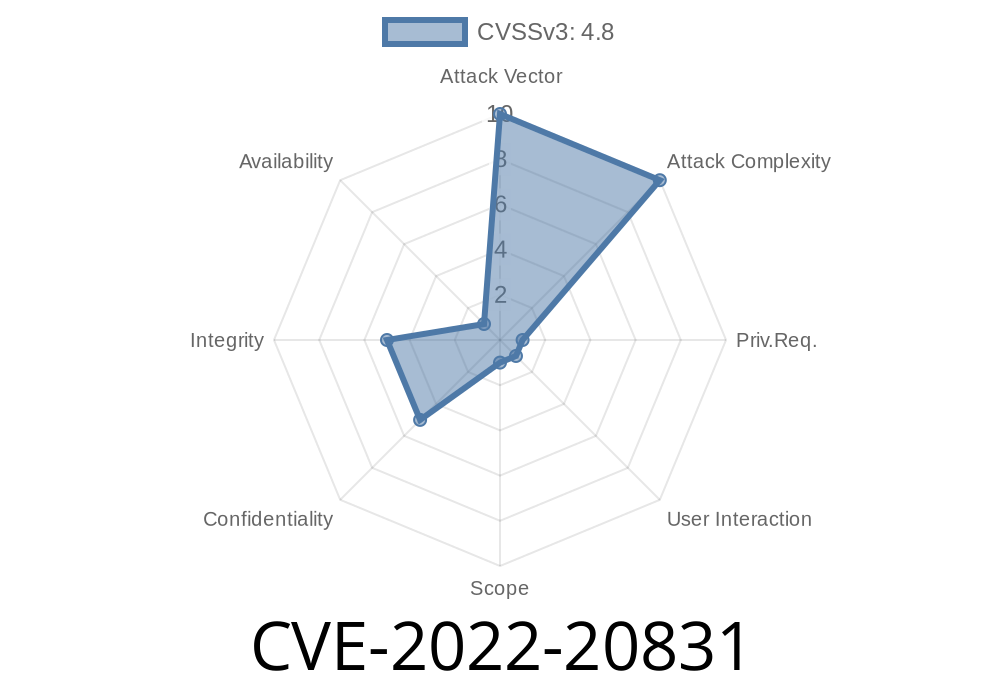Recently, several vulnerabilities have been discovered in the web-based management interface of Cisco Firepower Management Center (FMC) Software. These vulnerabilities could allow an authenticated, remote attacker to conduct a stored cross-site scripting (XSS) attack against a user of the interface of an affected device. This post aims to provide detailed information about these vulnerabilities, how they can be exploited, and what the potential impact might be.
Vulnerabilities
These vulnerabilities, collectively referred to as CVE-2022-20831, arise due to insufficient validation of user-supplied input by the web-based management interface. Specifically, an attacker could exploit these vulnerabilities by inserting crafted input into various data fields in an affected interface.
A successfully executed exploit could potentially allow the attacker to execute arbitrary script code in the context of the interface or access sensitive, browser-based information. In some situations, it is also possible for the exploit to cause availability impact, temporarily affecting portions of the FMC Dashboard.
Code Snippet
The vulnerabilities in question can be exploited by submitting crafted HTML code in specific input fields of the web-based management interface. For example:
<script>alert("XSS");</script>
By injecting such a code snippet, an attacker could potentially cause a pop-up alert to be displayed when a user accesses the affected page within the management interface, thereby confirming the successful execution of the exploit.
There are two main types of exploitation scenarios for these vulnerabilities
1. Targeted attack: The attacker has credentials to access the FMC web-based management interface and inserts malicious payloads into the interface's input fields. These payloads are then executed whenever an unsuspecting user views the pages containing the malicious input.
2. Social engineering: The attacker convinces a user with credentials to access the FMC web-based management interface to visit a site containing crafted links that trigger the vulnerabilities. When clicked, these links inject malicious payloads into the interface's input fields, which are then executed as in the targeted attack scenario.
Original References
Cisco has released security advisories regarding these vulnerabilities, providing more information on the impact and affected software versions. The advisories can be found at the following links:
- Cisco Firepower Management Center Stored Cross-Site Scripting Vulnerability: CVE-2022-20831
- Cisco Firepower Management Center Dashboard Availability Vulnerability: CVE-2022-20848
Conclusion
In light of these vulnerabilities, it is essential for organizations using Cisco Firepower Management Center Software to apply the necessary security updates and patches to mitigate the potential risks. Furthermore, users should be vigilant and cautious about the input they provide in the web-based management interface, as well as the links they click. Following best practices and maintaining a robust security posture will help protect against these and other threats.
Timeline
Published on: 11/15/2022 21:15:00 UTC
Last modified on: 11/18/2022 15:53:00 UTC
